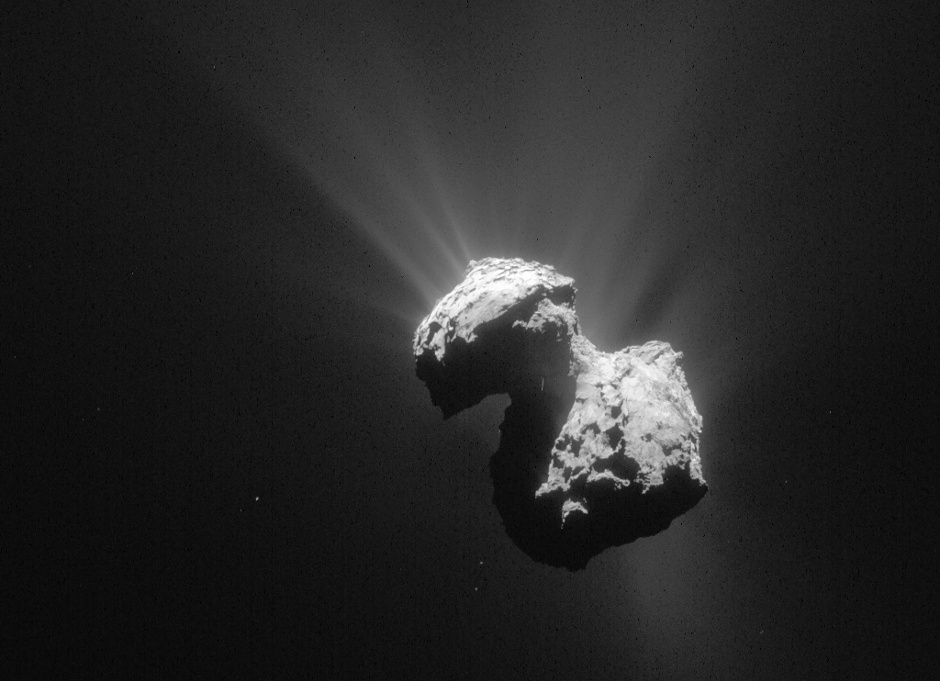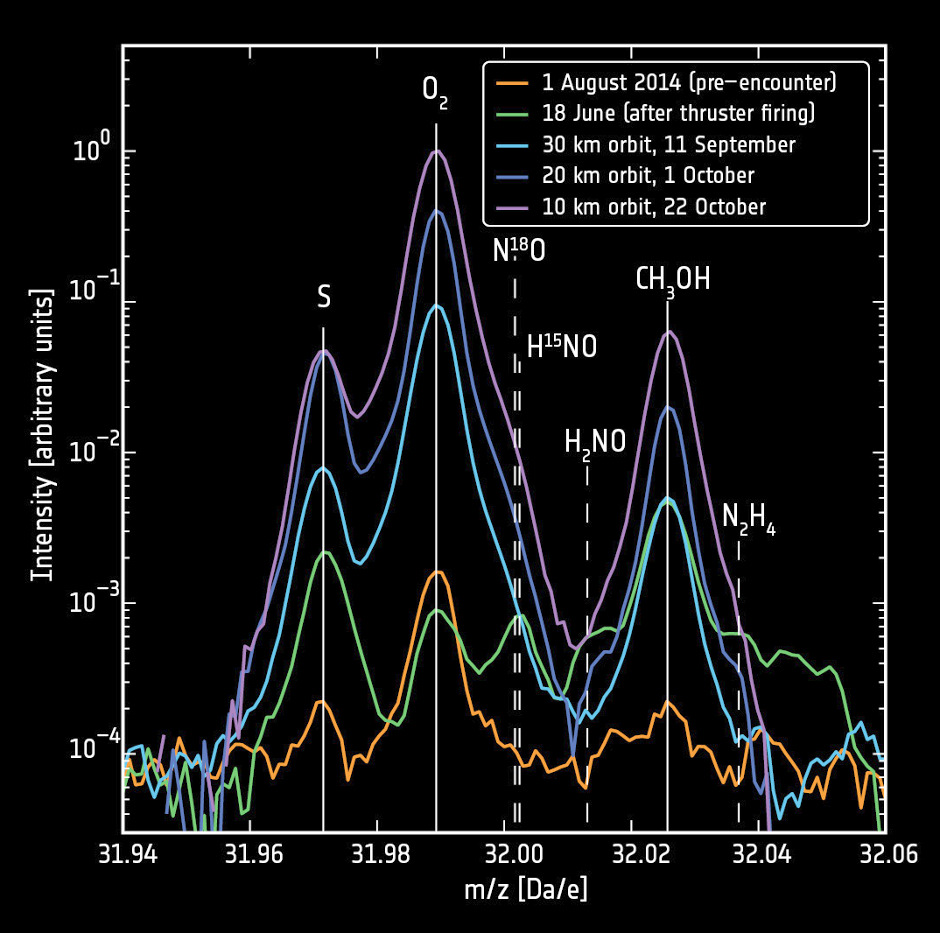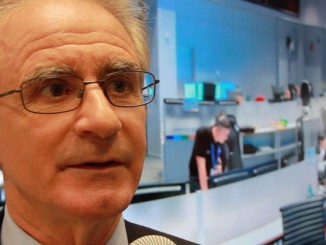

Invisible from Earth
Molecular oxygen is very difficult to detect with spectroscopic measurements from telescopes, which explains why this molecule had not already been observed on other comets. An in situ measurement by the ROSINA mass spectrometer was needed to make this discovery. “It was also astonishing that the ratio of water to oxygen didn’t change in different locations on the comet or over time — so there is a stable correlation between water and oxygen,” says co-author Altwegg.
Ancient Substance
In contrast to comets, it is known that oxygen molecules occur on the moons of Jupiter and Saturn. That is explained by their being struck by high-energy particles from their respective mother planets, which does not exist in the case of Comet 67P/Churyumov-Gerasimenko. The comet has been bombarded for 4.6 billion years, though, by high-energy cosmic radiation particles. These particles can split water, resulting in the formation of oxygen, hydrogen and ozone, among other substances. These particles only penetrate a few metres into the surface, however. In each of its revolutions around the Sun, though, the comet loses between one and ten metres from its circumference. Since its last meeting with Jupiter in 1959, which set the comet on its current orbit, it has consequently lost more than 100 metres of its material.
The most likely explanation, according to the researchers, is that the oxygen originated very early, before the formation of the solar system. Specifically, high-energy particles struck grains of ice in the cold and dense birthplaces of stars, the so-called dark nebulae, and split water into oxygen and hydrogen. The oxygen was then not further “processed” in the early solar system. The oxygen measurements show that at least a significant part of the comet’s material is older than our solar system and has a composition typical of dark nebulae, from which solar nebulae and later planetary systems originate. “This evidence of oxygen as an ancient substance will likely discredit some theoretical models of the formation of the solar system,” says Altwegg.



